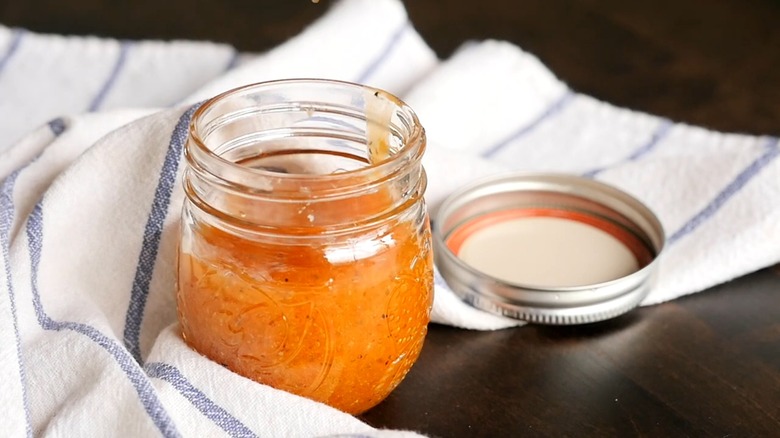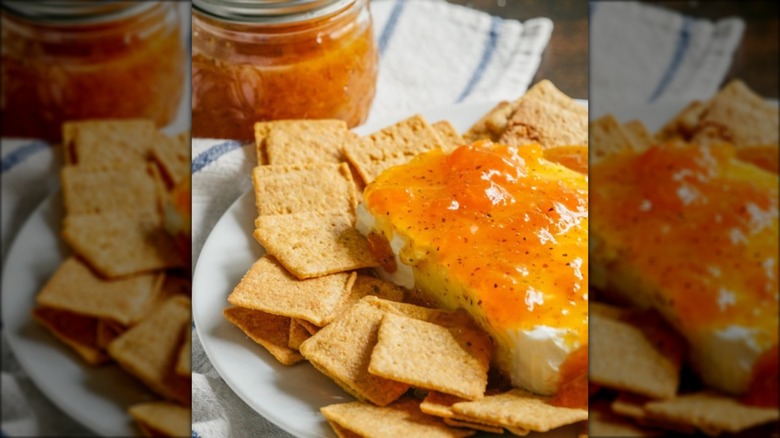The Origin Of Jezebel Sauce And How It Got Its Name
If you hail from the American South, you've likely heard of jezebel sauce, also known as Dixie relish. Sweet and spicy by turns, this condiment tastes heavenly slathered on a burger under a mess of caramelized onions, or served over a block of cream cheese with crackers on the side at your next get-together. It's a simple mixture of prepared horseradish (which is not to be confused with either fresh or dried horseradish), dry mustard, crushed red pepper, black pepper, and fruit marmalade or jam — and yes, there is a difference. The result is subtly fruity with a kick of powerful heat.
The origins of jezebel sauce are murky. Just like similarly classic Southern food Hoppin' John, more than one party takes credit for its invention. Most agree that the sauce came from the Gulf Coast, which spans East Texas to the Florida Panhandle. Cookbooks started including jezebel sauce around the middle of the last century. Beyond those two very basic biographical details, things get hazy. As the years went by, the sauce gained prominence at church potlucks and the dinner parties of Southern belles, primarily as a ham glaze, and everyone's mama had the "best" recipe. Family variations include subbing Dijon for the dry mustard, mixing up the jam component with various fruit compotes or preserves, and adding secret ingredients like fresh ginger or grated jalapeño.
Jezebel: villainous lady, glorious sauce
Given the ties between religion and Southern culture, it's probable that jezebel sauce got its name from the biblical character. Jezebel was a killer queen known to be seductive and dangerous: Her greatest hits include slaying prophets, dissuading the nation of Israel from worshipping God, and sparking a civil war. In modern usage, a "Jezebel" is a woman with a bad reputation. It makes sense, then, that jezebel sauce was named as a tongue-in-cheek reference to a woman who was intense, just like the spiciness of the condiment.
Jezebel's nastiness may be legend, but your loved ones will praise the angels when you bring this fiery, flavorful dip to your next event. For some modern takes on an old classic, try warming your sauce before serving it over brie or goat cheese, basting grilled chicken with it, or smearing it all over a buttered biscuit ... a flaky, homemade Southern-style one, of course!

